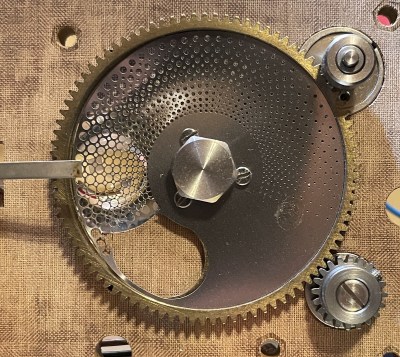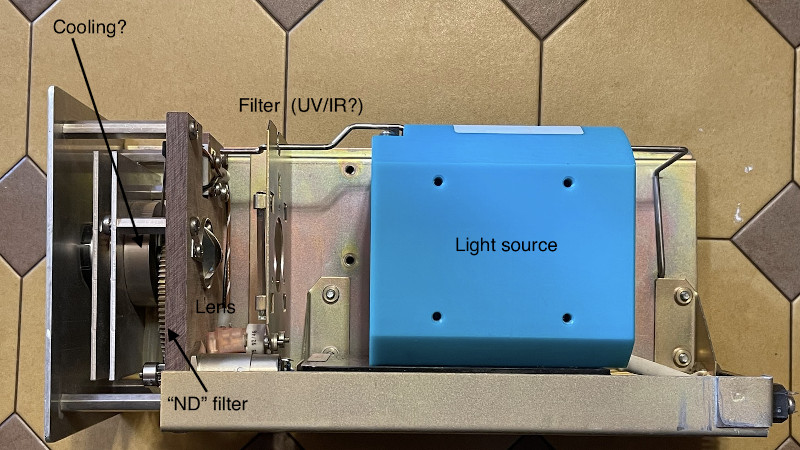While originally designed to put light where the sun don’t shine for medical purposes, [Nava Whiteford] says the Wolf 5151 Xenon endoscopic light source also works well for microscopy and general optical experiments, especially since you can get them fairly cheap on the second hand market. His cost just $50 USD, which is a steal when you consider a replacement for its 300 watt Olympus-made bulb will run you about 200 bucks alone.
That said, [Nava] recently moved on to a more compact light source, and figured that was a good enough excuse to crack open the Wolf 5151 and see what makes it tick. In this particular post he’s just looking at the optical side of things, which is arguably the most interesting aspect of the device. Helpfully, the whole assembly is mounted to its own sled of sorts that can be pulled from the light source for a closer examination.

Beyond that expensive bulb we mentioned earlier, there’s a thick piece of what appears to be standard plate glass being used as an IR and UV filter. [Nava] suspects this component is responsible for keeping the rest of the optics from overheating, which is backed up by the fact that the metal plate its mounted to appears to feature a K-type thermocouple to keep an eye on its operating temperature. Forward of that is a unique aspheric lens that features a rough spot to presumably scatter the light at the center of the beam.
Our vote for the most fascinating component has to go to the Neutral Density (ND) filter, which is used to control the intensity of the light. In a more pedestrian light source you could just dim the bulb, but in this case, the Wolf 5151 uses a metal disk with an array of holes drilled into it. By rotating the disc with a DC motor, the lens can be variably occluded to reduce the amount of light that reaches the aperture, which connects to the fiber cable.
While it’s perhaps no surprise the build quality of this medical gear is considerably beyond the commercial gadgets most of us get to play with, it still doesn’t hold a candle (no pun intended) to the laser module pulled from a Tornado jet fighter.
















This is an arc lamp so, yeah, not really dimmable. The metal ND filter would tolerate the crazy heat of that light beam better than any organic film or plating.
There is loads of UV in the xenon source. I bet the metal filter is the choice because it won’t degrade or have any variation with wavelength. It is like an iris for f-stops but it does not change the spacial size of the source which keeps the optics simple. Very cool design!
Illuminating article!!!
Worked on something like this. The source was a Xenon arc and it used a plate dimmer just like this one. The glass is special high temp IR and UV blocking, IIRC. There’s probably forced air cooling of the Xenon source (which, as you note, is mucho dinero and don’t touch it, because the oil in your fingers will cause it to fail)
Is this the part where I need to submit a teardown of a 1.2KW moving light?, because that’s got way more in the fun materials department than this. We’ve got exotic glues, unusual magnets, dichroic mirrors, high temperature lubricants, fast and thin glass, kapton tape, speed tape…
Yes please!
(in LaBeouf voice) Do it! Just DO IT!
This filter has a gradient from left (more light) to right (less light).
Doesn’t that interfere with its usecase in any way shape or form?